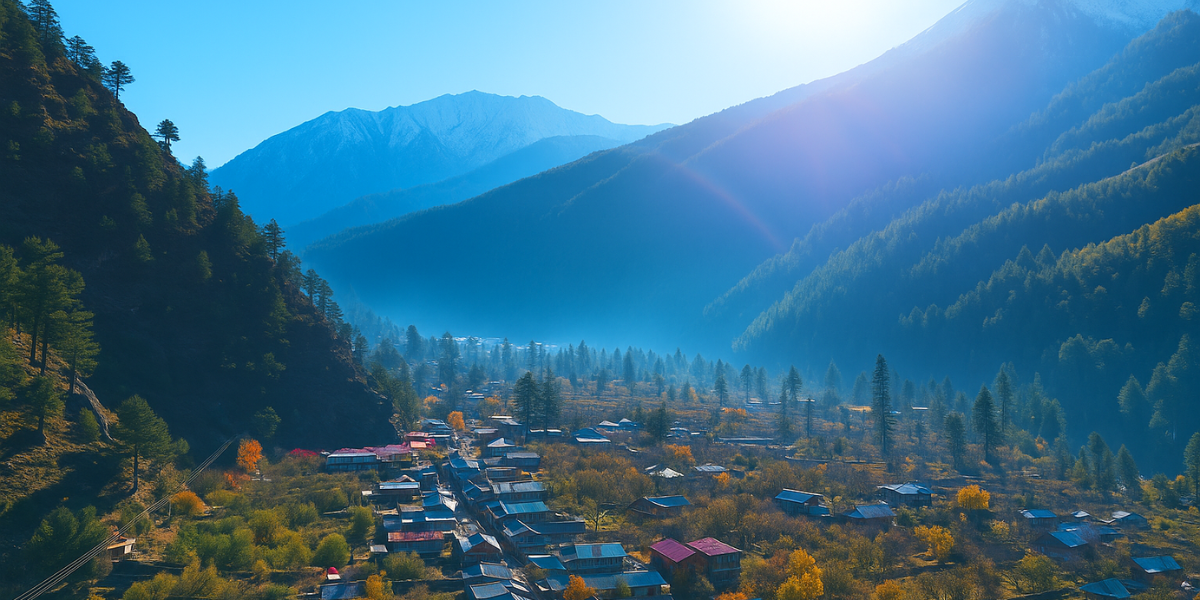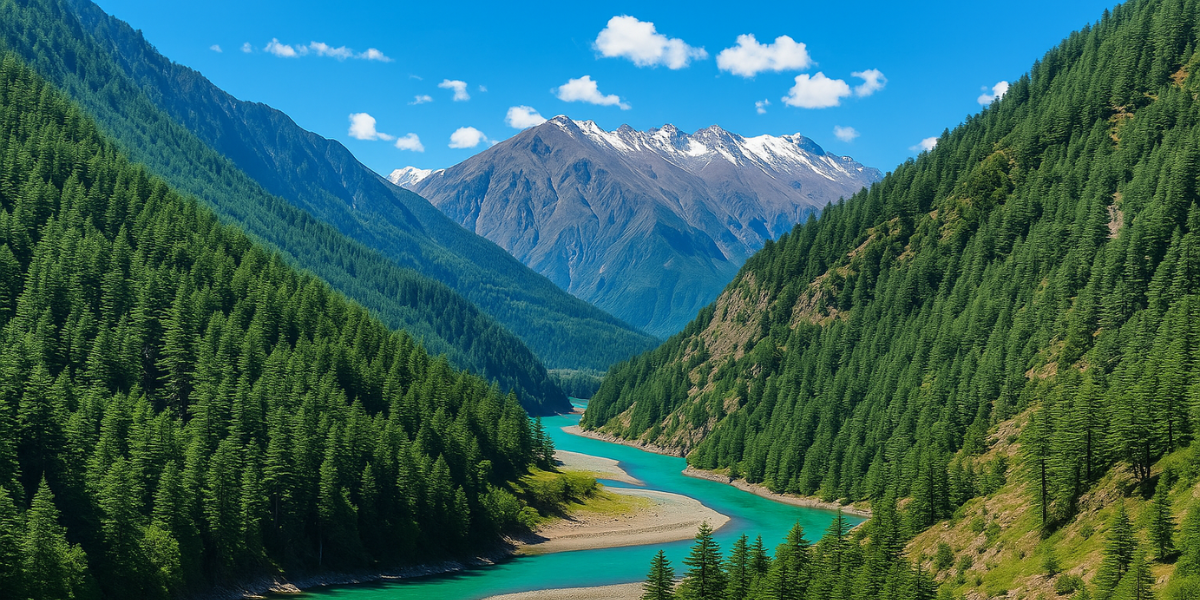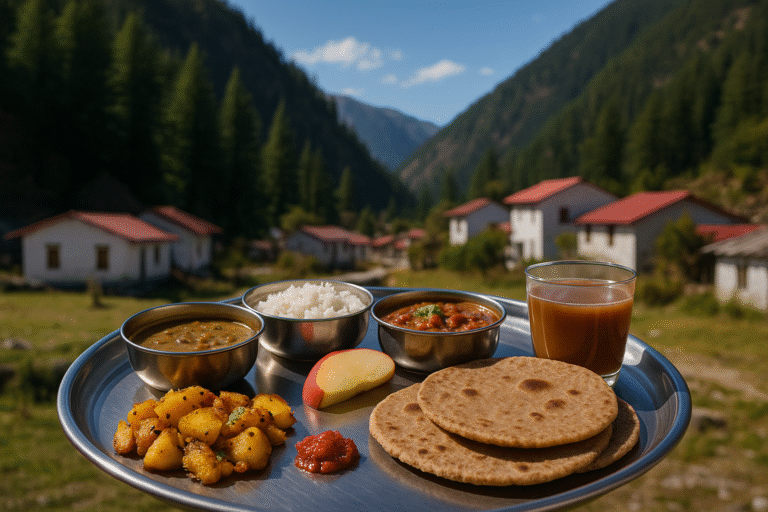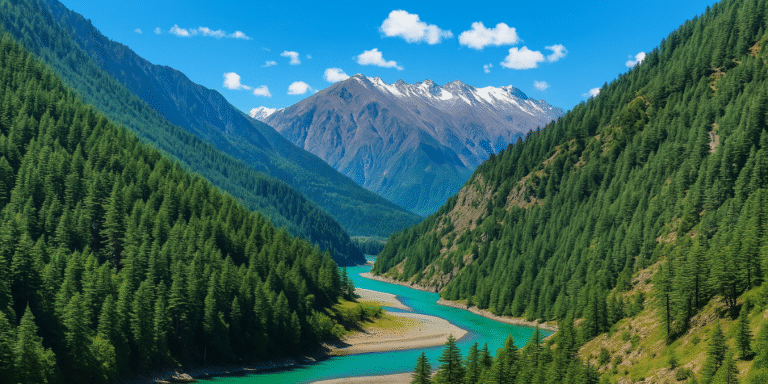Harsil isn’t just a quiet Himalayan village anymore—it’s Uttarakhand’s best-kept example of eco-tourism done right. While most hill stations are crumbling under over-tourism, pollution, and mindless construction, Harsil has stayed balanced. And it’s not by accident. This village deserves national attention as a model eco-village—not just for Uttarakhand, but for all of India.
Table of Contents
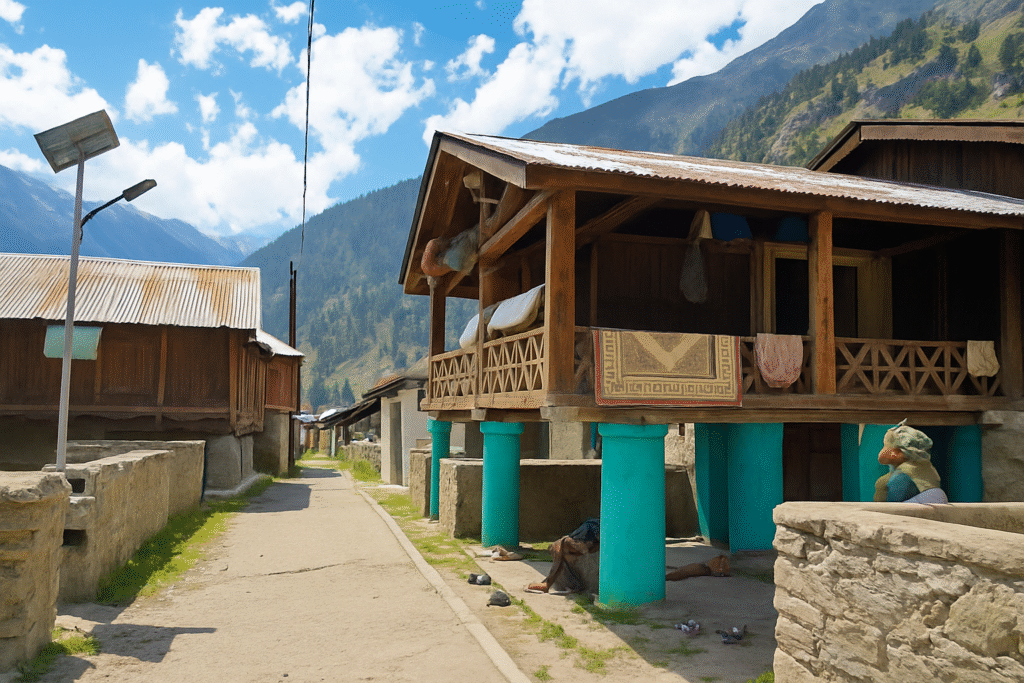
1. Unspoiled Natural Ecology Still Intact
Harsil sits on the banks of the Bhagirathi River at 7,860 ft, surrounded by thick pine forests, apple orchards, and snow-covered peaks. Unlike overrun spots like Mussoorie or Shimla, the natural habitat here is still untouched. Wildlife sightings—like Himalayan monals, barking deer, and even bears—are still common. No plastic dumps. No commercial hoardings. No DJ nights. Just raw, crisp mountain air and the sound of the river.
Quick facts:
• Harsil is part of the Gangotri National Park eco-zone
• Recognized as a biodiversity-rich area by the Forest Department
• Apple orchards here are still grown without chemical fertilizers or artificial ripening agents
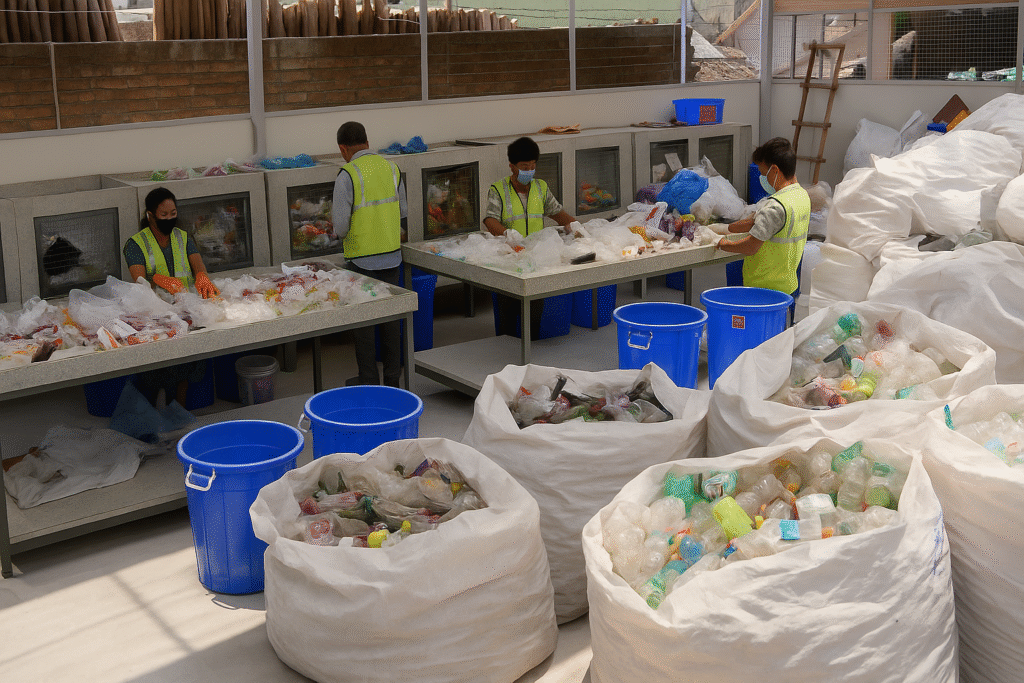
2. Successful Waste Management by Private NGO’s & Local Governance
One major reason Harsil is ahead—its village panchayat and Van Panchayats actually work. They’ve restricted plastic entry into the valley, enforced local composting, and maintained green zones around the Bhagirathi belt. Also several NGO’s across Uttarakhand like Social Development for Communities (SDC) Foundation have stepped ahead to make these remote villages plastic and garbage free.
Key example:
• Tourists are encouraged to carry back non-degradable waste
• Several small NGOs and gram sabhas organize monthly clean-up drives
• Locals use pine needles and dried leaves for bio-fuel instead of firewood
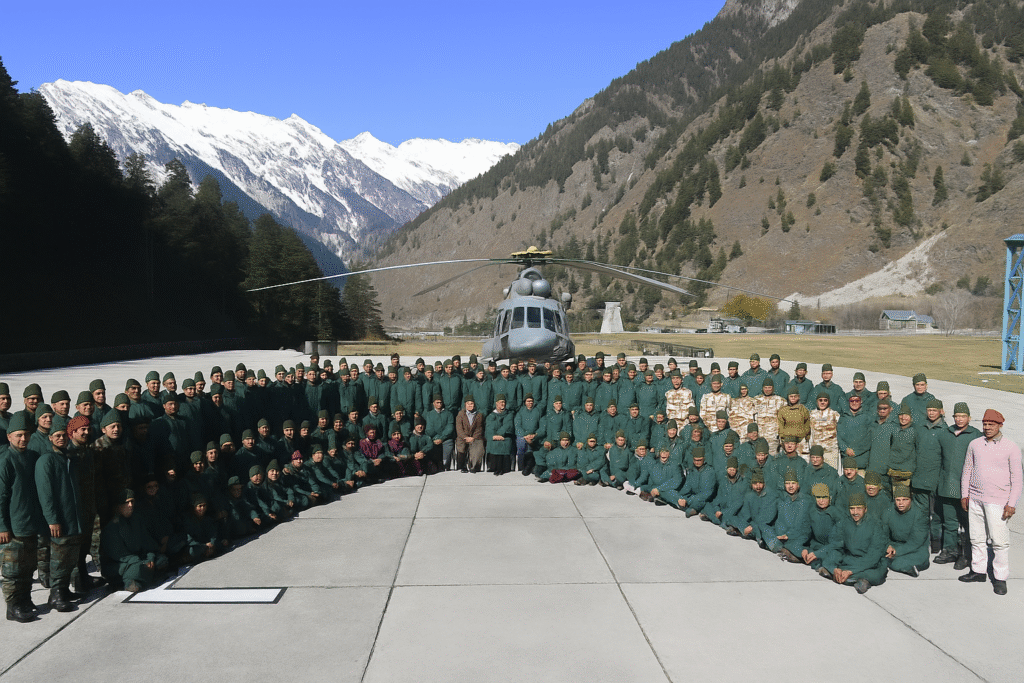
3. Army, ITBP, and Tourism
You won’t see this often, but in Harsil, the Indian Army, Indo-Tibetan Border Police (ITBP), and tourism bodies work together. Why does this matter? Because it keeps the area protected and monitored. Roads are well-kept, landslides are cleared fast, and outsiders can’t just randomly construct things.
This silent ecosystem of cooperation has kept Harsil sustainable even during the post-COVID rush in 2021–2023.
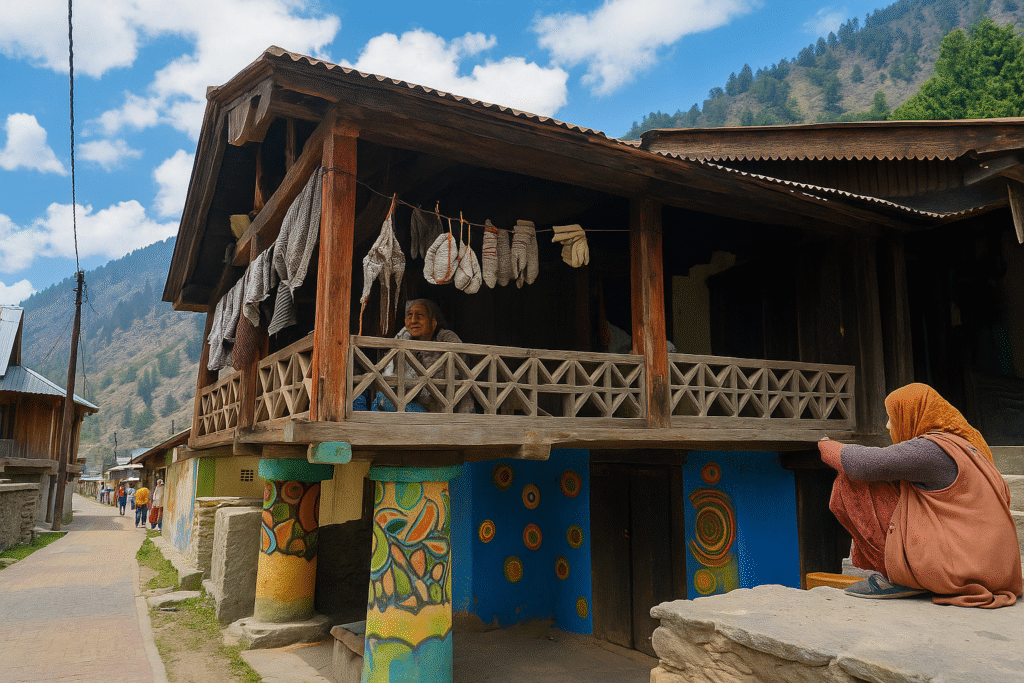
4. Tourism Without Overcrowding
Harsil has cracked the code—less is more. The tourism model here is:
• Small boutique stays
• Homestays run by locals
• No big hotels or luxury resorts
What you get instead is real cultural exposure—wooden homes, traditional Garhwali food, and local stories. Even during the Gangotri season, most visitors use Harsil as a calm overnight base, not a party town.
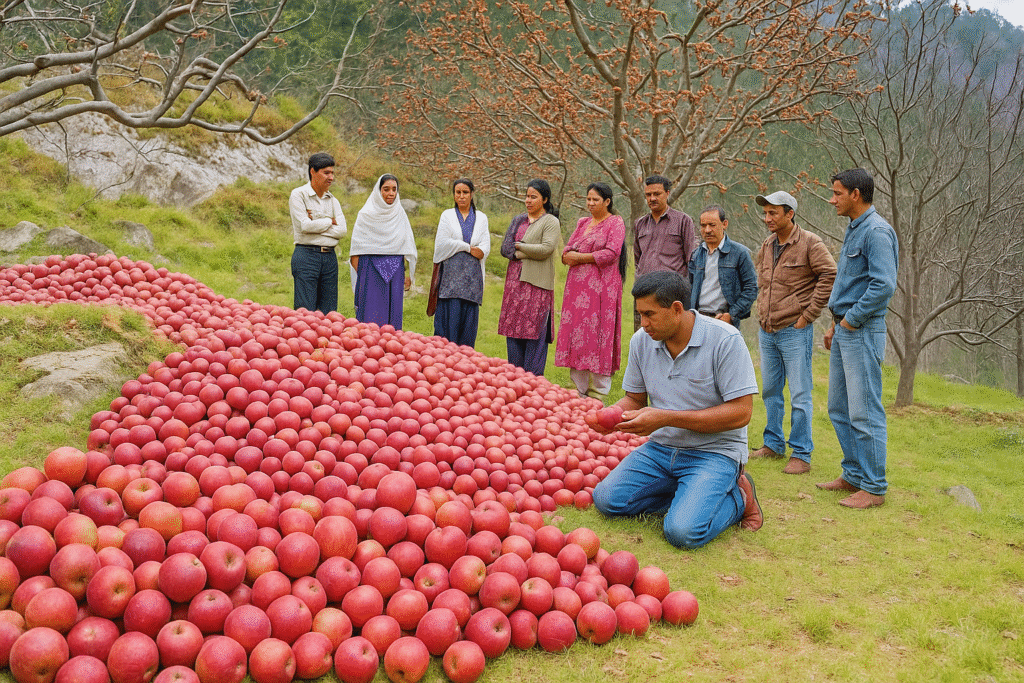
5. Scope for Agro & Cultural Tourism
Harsil has over 600 active apple farmers, producing native varieties like Royal Delicious and Golden. Visitors can tour orchards, pick apples, and learn how mountain farming works. This kind of agro-tourism is low-impact but high-value.
Not just apples—locals are now offering:
• Wool weaving demos using sheep wool
• Traditional folk music evenings
• Organic local thali meals cooked on wood fire
This is how culture stays alive without being commercialized.
6. Minimalist Infrastructure, Maximum Efficiency
Despite minimal road construction and zero high-rise buildings, Harsil still offers:
• Jio and BSNL connectivity (no towers near the river though)
• 24/7 electricity (solar-backed in winter months)
• Clean water via traditional kuhls and stream-fed tanks
It’s a low-tech, high-efficiency model—perfect for other villages to learn from.
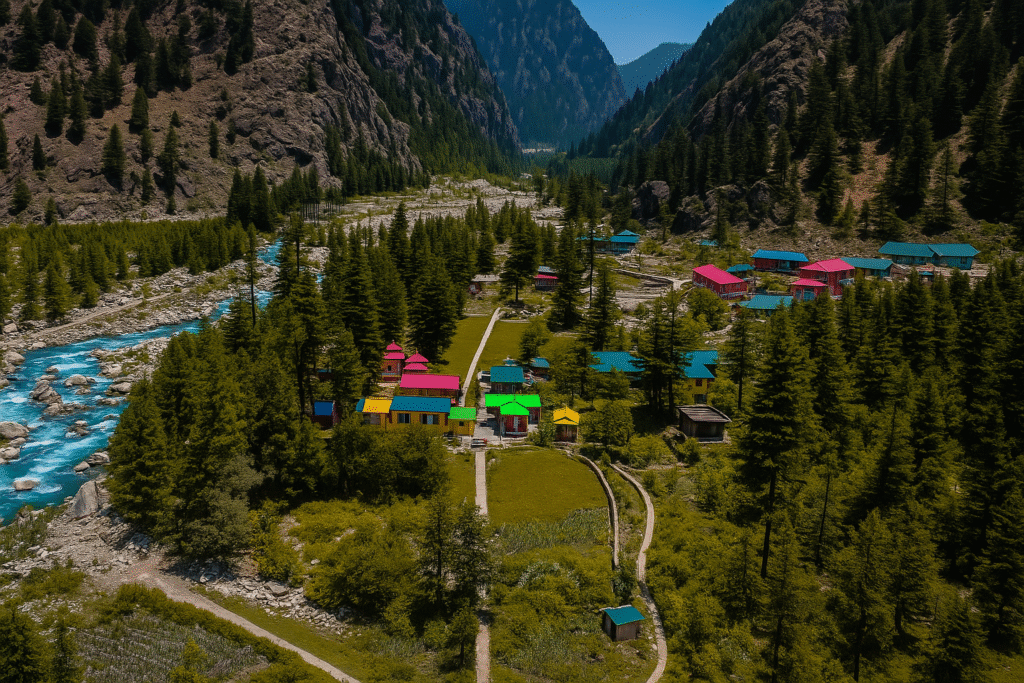
7. Endorsed by Environmental Experts & Policy Advocates
Harsil has been mentioned in:
• Uttarakhand Tourism Board’s 2022–24 Sustainable Travel Plan
• Recognized in the “Eco Villages of India” pilot report by the National Institute of Rural Development (NIRD)
• Backed by NGOs like Avani Kumaon and Himalayan Education Foundation for pilot projects on low-carbon living
If a place is already doing 70% of what flagship eco-villages should do—why not scale it officially?
8. Perfect Blueprint for Other Himalayan Regions
Harsil is remote, yes—but not inaccessible. It’s just 73 km from Uttarkashi and well-connected to Gangotri. That makes it a practical pilot model for other remote Himalayan belts—like Munsiyari, Sankri, or Nelong Valley.
- Decentralized waste systems
- Cultural-tourism run by locals
- Orchard and forest-based livelihoods
- Climate-friendly building materials
- Educating locals about sustainable tourism practices
Harsil can become India’s first officially recognized eco-village in the Himalayas, if the government simply gives it the policy status and funding.

About Travel Vaidya – Trusted Travel Experts of Uttarakhand
Travel Vaidya is a Dehradun-based travel company with deep roots across Uttarakhand. For over 9 years, we’ve helped families, senior citizens, and spiritual travelers explore places like Char Dham, Auli, Jim Corbett, Nainital, Kausani, Almora, and Ranikhet with confidence.
We’re not a call center or big-brand OTA—we’re a small team that builds practical, experience-based itineraries. Every plan is shaped by local knowledge, seasonal awareness, and what actually works on-ground.
From temple visits to hotel check-ins, we handle logistics, route planning, and day-wise support—especially for elders and family travelers. We share what we know from living here, not from reading about it.
This guide is part of our effort to make travel in Uttarakhand easier to understand and plan.


